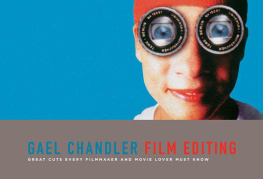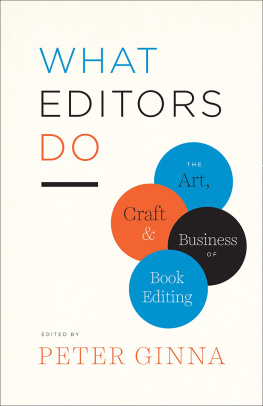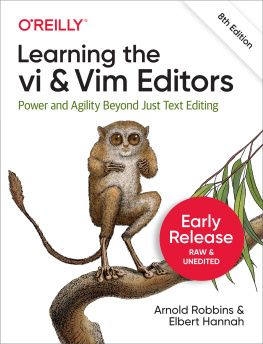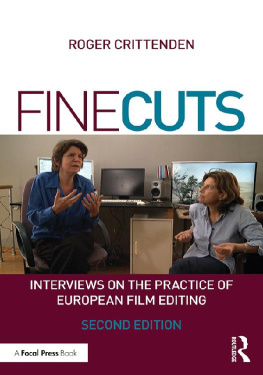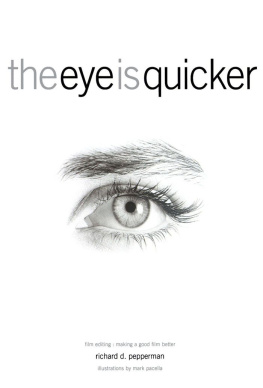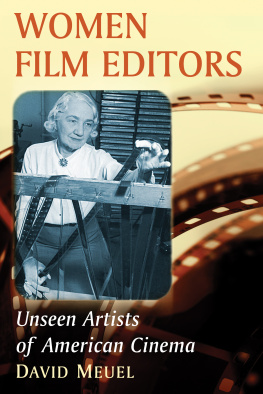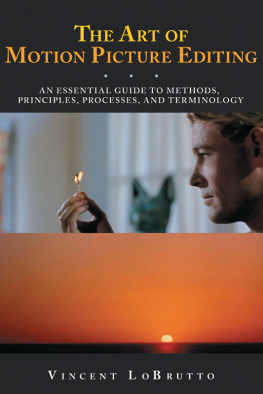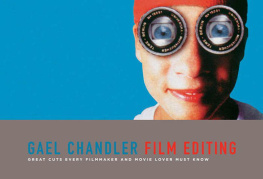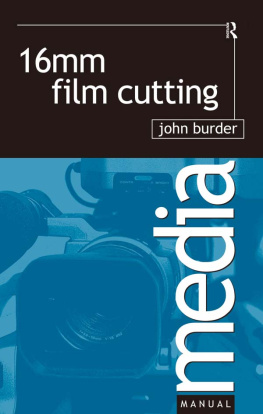FIRST CUT 2
First Cut 2
More Conversations with Film Editors
GABRIELLA OLDHAM

University of California Press, one of the most distinguished university presses in the United States, enriches lives around the world by advancing scholarship in the humanities, social sciences, and natural sciences. Its activities are supported by the UC Press Foundation and by philanthropic contributions from individuals and institutions. For more information, visit www.ucpress.edu .
University of California Press
Berkeley and Los Angeles, California
University of California Press, Ltd.
London, England
2012 by The Regents of the University of California
Library of Congress Cataloging-in-Publication Data
Oldham, Gabriella.
First cut 2 : more conversations with film editors / Gabriella Oldham.
p. cm.
Includes bibliographical references and index.
ISBN 9780520273504 (cloth, alk. paper)
ISBN 9780520273511 (pbk. : alk. paper)
1. Motion picturesEditing. 2. Motion picture editorsInterviews. I. Title.
TR899.O44 2012
Manufactured in the United States of America
21 20 19 18 17 16 15 14 13 12
10 9 8 7 6 5 4 3 2 1
In keeping with its commitment to support environmentally responsible and sustainable printing practices, UC Press has printed this book on 50# Enterprise, a 30% post consumer waste, recycled, de- inked fiber and processed chlorine free. It is acid-free, and meets all ANSI/NISO (Z 39.48) requirements.
Contents
Mark Livolsi
Angelo Corrao
Julie Monroe
Jonathan Oppenheim
Lucia Zucchetti
Joe Bini
Alan Berliner
Emma E. Hickox
Kate Amend
Richard Chew
Victor Livingston
Michael Tronick
Acknowledgments
Great thanks to all the film editors who gave of their time to participate in these interviews (as well as for their many kind words about the first First Cut!). I remain in awe of their creativity, their artistry, their process, and most of all, their kind and compassionate spirit.
A special acknowledgment and tribute to Sally Menke, who graciously agreed to be interviewed before her untimely death. Her extraordinary experience working with Quentin Tarantino and other directors would have greatly illuminated this book.
To the many editors of First Cut: Conversations with Film Editors who responded to my letters of inquiry more than twenty years later, supplying encouragement and contacts to jump-start this second volume. I am especially grateful to Paul Hirsch for his insights, assistance, and support in the early stages of this book.
To Mary Francis of University of California Press for her sage advice, enthusiasm for pursuing a sequel, and unwavering confidence in this and future projects. I am also most grateful to Kim Hogeland, Cindy Fulton, Andrew Frisardi, and all at UC Press who worked on this book.
To Fabianawhen First Cut (the first) came out, you were three years old, too young to understand film, but mature enough to know a good thing when you saw it! Heres the sequel and youre twenty-twolittle did I know that my wistful hope for you to be a film editor when you grow up would become reality. Immerse yourself in film. Study the best, learn from the worst, love the process, and discover your voice. Let film be your world and the world, your film.
To Raoul, I know you would have liked a doctor or lawyer in the family, but thank you for supporting your daughters aspirations. One day you will be proud.
To Petunia, I hope she knows why I remain grateful for her presence.
To my mother, who believed I could write even when I doubted. All that I am is because of what you have given me, and for that I am so rich and deeply grateful.
Introduction
Twenty years may seem endless, but they may also feel much like the blink of an eye. In the twenty years since the publication of First Cut: Conversations with Film Editors, this duality of endless/instant has come to characterize everyday twenty-first-century life, not to mention the evolution in the techniques of filmmaking, and of film editing in particular. Before looking at editing specifically, however, a snapshot of the twenty years that led to this second volume, First Cut 2: More Conversations with Film Editors, may illuminate this duality that both intimidates and exhilarates.
During the late 1980s, when I was seeking editors to interview for the first volume, I had no such tools as Yahoo, Google, IMDb, or any other database that is at ones fingertips today. I had chanced upon a book at the Coliseum Bookstore in New York City that happened to list the credits of most working and retired editors of feature films from the golden age of Hollywood to the 1980sand, unbelievably, their home addresses and telephone numbers. Subsequently, I mailed letters requesting interviews, and each editor graciously answered using my return self-addressed stamped envelope. To screen films for my interviews, I rented ten or more VHS tapes each weekend from local video stores, to the wide-eyed wonder of attendants behind the counter. I recorded all interviews on audiotapes, vigilantly watching the turning wheel of the cassette to make sure the fragile tape did not catch in the recorders mechanical jaw. Via snail mail again, I forwarded transcripts to each editor who added, deleted, and reworded their thoughts in meticulous longhand directly on the pages, and posted them back so I could enter them on, yes, a computer, but without todays bells and whistles. This revision process flew cross-country between us several times, every change documented in the editors fine penmanship. Had there been a speedier way to execute this routine, I did not know or did not care to know. The slow way created my rapport with the editors as well as the quiet enthusiasm I savored in producing my first book.
Twenty years ago, life seemed slower anyway. Although progress was percolating in fits and starts, there was still no rampage of cell phones, faxes, Internet, CDs, DVDs, HDTVs, laser disks, laptops, tablets, apps, iPods, iPads, iPhones, Nooks, Kindles, Tweets, Twitters, high-speed modems, and high-def lifestyles too complex to describe. Film editors were slowly transitioning as well to using new technology. Their world had long operated with hand-cranked reels, Moviolas, Steenbecks, flatbeds, grease pencils, tape, hot splices, and scissors. It was all in a days (and nights) work for editors to dash dailies to laboratories for every print and to imagine in their minds eye special effects (dissolves, fades) that they would mark on the celluloid for the labs to create. Despite the tedious hand-craft that ruled the editing room from the onset of filmmaking until the 1980s, editors created masterpieces that broke new ground and set cinematic standards that reflected changing mores and expectations. They did it the hard way because that was the way they learned how to do it, and they did it extraordinarily. The slow pacing of many golden age films yielded to the flash-cutting of wild car chases and acid trips in the 1960s and 1970s, but the physical labor of cutting prevailed and succeeded, regardless of rhythm. The so-called tedium, in fact, prompted greater contemplation and reflection on the films characters, stories, and emotions. The slowness of editing both invited and compelled editors to think deeply about every cut
Next page

